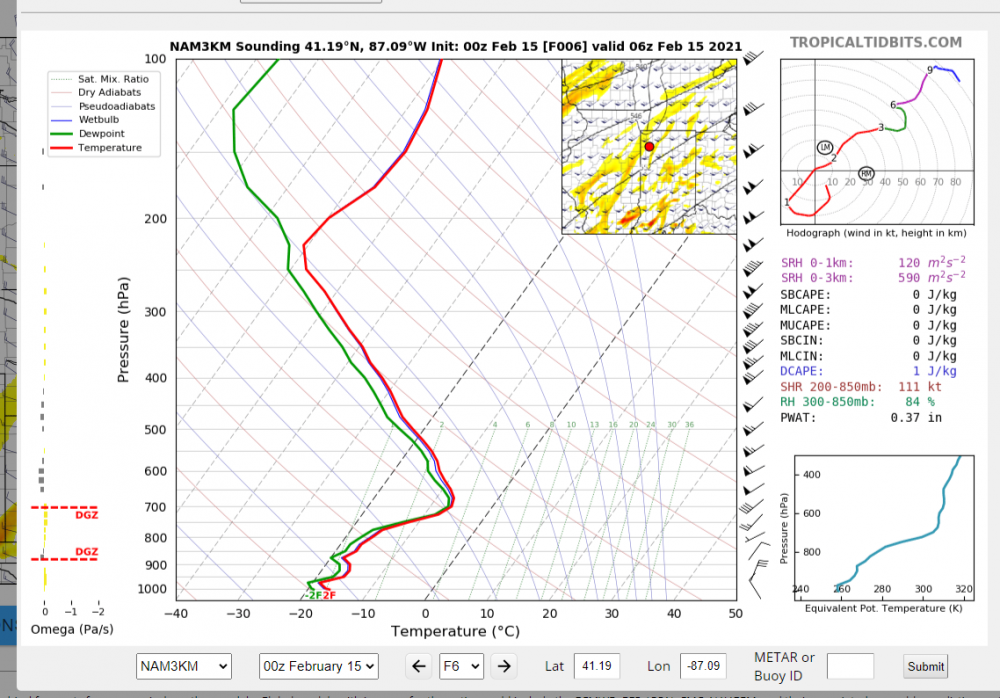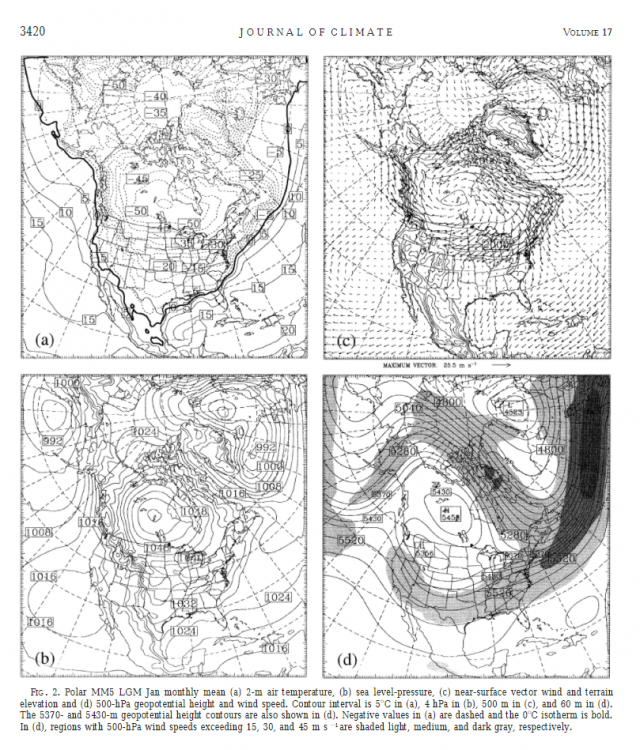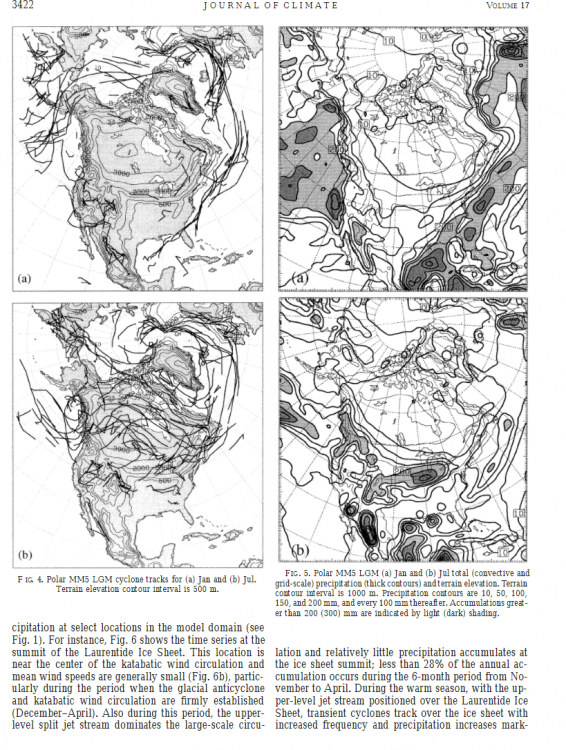-
Posts
5,571 -
Joined
-
Last visited
Content Type
Profiles
Blogs
Forums
American Weather
Media Demo
Store
Gallery
Everything posted by csnavywx
-

Southern MD / Lower Eastern Shore weather discussion
csnavywx replied to PrinceFrederickWx's topic in Mid Atlantic
11% in St. Mary's and 8% in Calvert so far. Starting to lose small limbs regularly. Have heard a few bigger ones in the woods. -

Southern MD / Lower Eastern Shore weather discussion
csnavywx replied to PrinceFrederickWx's topic in Mid Atlantic
Got above freezing for a few hours this afternoon, but now back below with a moderate freezing drizzle. Tonight and tomorrow might get nasty with wave 2 in SoMd. -
I've been happy to be getting scraps down here after 2 shut-out years. Last year I had to scrape frost off my car a grand total of twice.
-
+TSSN at 14F in south TX definitely takes the cake.
-
-
That's some truly extreme stuff. Skew-Ts/forecast profiles are absolutely nutty looking.
-
Good convergence and all now well NW of last night's 00Z runs.
-
It makes sense from an operational standpoint to protect your low end at this point until more guidance picks up the trend towards a more negatively tilted mid/upper trough, especially since an error of even 0.1 to 0.2 of liquid with 20-30:1 SLRs can result in a pretty sizeable bust. But I will say that the NAM has been absolutely killing it on the east coast at these ranges, beating even the Euro/UK (with the typical caveat about using high-res CAMs cautiously for some winter events). The GFS (and the new version as well) has been trending that way the past few runs as well, so keep a sharp eye out. It wouldn't really surprise me to see some convergence on that solution in the next 12-18 hours.
-
Busy getting shut-out of winter storms in southern Maryland nowadays, or iced (like yesterday), but this one caught my eye. Arctic powder bombs are fun and challenging to forecast.
-
Not sure if it's being mentioned much, but that's a hell of a DGZ to work with. Ratios are going to be sky-high on a broad swath of N/NW flank of the storm. DGZs are between 200-400mb in depth and wind shear is low, which would cut down on shattering/breaking aggregates. Saturation isn't great, but it's not bad, either. Pretty telling when the pos-snow depth change products on the models are significantly higher than the classic 10:1 maps. You don't often see that kind of delta.
-
This 100%. Snowcover helped, but transpose this forward 6-9 hours and throw in some slightly lower ground temps and it would be way worse. It's very close as it is, but accretion efficiency wasn't quite there for a big dog ice storm.
-
Yep, weak insolation keeping this from becoming an absolute disaster here. 30.5/27.5. Lower dews will be a big concern heading towards sundown considering the steady 10-13 knots of wind.
-

Southern MD / Lower Eastern Shore weather discussion
csnavywx replied to PrinceFrederickWx's topic in Mid Atlantic
Tomorrow morning starting to look pretty nasty. Not liking the faster dewpoint drop this morning and the mid-levels get saturated again a lot faster on the latest NAM and HRRR tomorrow morning. May prove to be tough to get rid of that near-surface cold wedge. If tomorrow starts out as sleet or a sleet/fzra mix, that'll be a bad sign. -
About -20C avg temp in DC in Jan. 100-150mm of liquid equivalent on average. So 3-4". Big powder bombs are a weekly event with that kind of persistent tendency for jet split. Only issue? It never really gets that warm in the summer. Maybe 40s and 50s in July on average.
-

Southern MD / Lower Eastern Shore weather discussion
csnavywx replied to PrinceFrederickWx's topic in Mid Atlantic
Solid moderate snow for a while. About 2.5" so far. Will probably end up somewhere between 3 and 4". Not too shabby. -
About 2.5" so far, moderate accumulating snow currently. Decent rates.
-
If people keep complaining, it will be 33 and tumbleweeds -- just out of spite.
-
The NAM folding to the Euro past tau 48 is literally the least surprising development ever.
-

Southern MD / Lower Eastern Shore weather discussion
csnavywx replied to PrinceFrederickWx's topic in Mid Atlantic
Both the 00 and 12z Euro runs are weenie-of-the-year material for this region. Usually the Euro doesn't flinch at this lead time, so it will be interesting to see if the other guidance comes into agreement with it over the next 12-24 hours. The setup is pretty good for us. Nearly stalled boundary, with waves riding up to provide decent bouts of isentropic upglide, slowly sinking airmass with a strong high that doesn't move off prior to the event and can feed in cold, dry air near the surface and help provide f-gen forcing aloft. Lots to like -- question is whether we'll be just cold enough for the first wave or not. -

Southern MD / Lower Eastern Shore weather discussion
csnavywx replied to PrinceFrederickWx's topic in Mid Atlantic
Nature of the beast with these super-marginal events. Really need a big arctic high to tap into to prevent that from happening. I was thinking about 2" yesterday and we ended up with slightly more than that, so can't complain too much. -

Southern MD / Lower Eastern Shore weather discussion
csnavywx replied to PrinceFrederickWx's topic in Mid Atlantic
Hope everybody enjoyed the paste job yesterday. We did respectably well. Usually do with sliders. Another shot here on Wednesday night and then again on Friday. Perhaps another after that if that big honking Arctic airmass presses down slowly, though there might be some legit mix with an airmass that shallow. -
Bit of a catch-22 going on with the 3km, and a few reasons to take issue with using it over the 12km right now. The 3km has a tendency to overdo convection in marginally unstable profiles like this, which in this case, is feeding into a latent heat bias and thus -- and likely an overamplification of the surface low. Latent heat release from convection and surface pressure falls *can* work in tandem, but there's reason for this forecaster to believe that it's overdone here -- mainly experience with the NEST in this environment. The signal for some elevated upright instability being trained in is strong enough that it wouldn't surprise me to see some weak convection and a few strikes (particularly to the south), but probably not to the ridiculous degree we see here. One thing I *do* believe is that the warm nose will be tenacious in this kind of setup. P-type and rates will be very dependent on each other near the max accumulation line. You're gonna have to smell the mixing to get the most accumulation on this one. Also, weak instability combined with intense f-gen means intense bands, and subsequently a lot of subsidence around those bands. Some folks are going to get skunked and some will get jackpotted. Nature of the beast. Basically, when there's this big of a difference between the 2 resolutions of the same NAM, take note. There's some important details that can be gleaned from it.
-
-
The 3k and 12k being different is important. 3k phases a bit better and there's a significant band of instability that is entrained ahead of the system, along with quite a bit of convection, which will definitely have an effect on precip and track placement.
-

Southern MD / Lower Eastern Shore weather discussion
csnavywx replied to PrinceFrederickWx's topic in Mid Atlantic
Nice belt of unstable air being drawn up from the Caribbean and Gulf on the latest runs. Substantial ribbon of elevated CAPE showing up that could get entrained and make things interesting.








